Episodes
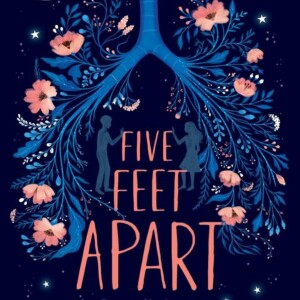
Monday Jul 07, 2025
Monday Jul 07, 2025
1 What's Five Feet Apart
"Five Feet Apart" by Rachael Lippincott is a poignant young adult novel that explores the themes of love, loss, and the challenges of living with chronic illness. The story follows two teenagers, Stella and Will, both suffering from cystic fibrosis, who are forced to maintain a physical distance of six feet apart to prevent cross-infection. As they connect and develop a deep bond against the backdrop of their medical struggles, they grapple with the complexities of intimacy, the desire for freedom, and the harsh realities of their condition. Ultimately, the novel highlights the importance of human connection, even when faced with seemingly insurmountable obstacles.
2 Key Concepts of Five Feet Apart
In "Five Feet Apart," the theme of longing for connection despite physical barriers is introduced in Chapter 1 and echoed throughout the novel. This theme is profoundly reflected in Chapters 6, 12, and 16. In these chapters, the protagonists, Stella and Will, navigate their feelings of isolation due to their cystic fibrosis diagnoses while yearning for closeness, which is complicated by their need to maintain distance for their health. Their emotional struggles and the intensity of their relationship illustrate the tension between the desire for intimacy and the constraints imposed by their conditions, highlighting the emotional toll of love in the face of adversity.
3 In-Depth Chapter Analysis of Five Feet Apart by Rachael Lippincott
"Five Feet Apart" by Rachael Lippincott explores themes of love, isolation, and the struggles of living with cystic fibrosis (CF). In Chapter 1, the story introduces the main characters, Stella and Will, who are both patients in a hospital due to their battle with CF. Their immediate connection highlights the theme of longing for human connection despite physical barriers. For instance, Stella meticulously adheres to her treatment regimen, showcasing her desire for control in an uncontrollable situation. This urgency to find connection while managing the limitations imposed by their conditions sets the foundation for the emotional depth of their relationship and the significance of the ‘five feet apart’ rule.
As the narrative progresses into Chapter 8, the relationship between Stella and Will deepens, illustrating the friction between yearning for intimacy and the strict boundaries their illness imposes. This chapter emphasizes the emotional weight of isolation; while they experience love and connection, they must also contend with the fear of cross-infection that threatens their lives. Will's more rebellious attitude toward treatment creates tension in their dynamic, representing the theme of risk versus safety. Their interactions, laden with a mix of hope and despair, provoke poignant questions about the nature of love and whether it is worth pursuing in the face of such dire restrictions. Ultimately, through their evolving relationship, Lippincott reflects on the broader theme of how love can both uplift and complicate our lives, especially when faced with the specter of illness.
Book Summary Audio Bookey https://www.bookey.app/audiobook/five-feet-apart
Quotes https://www.bookey.app/book/five-feet-apart/quote
Youtube https://www.youtube.com/watch?v=O_OdIYmSaFk
Amazon https://www.amazon.com/Five-Feet-Apart-Rachael-Lippincott/dp/1534437339
Goodreads https://www.goodreads.com/book/show/39939417-five-feet-apart
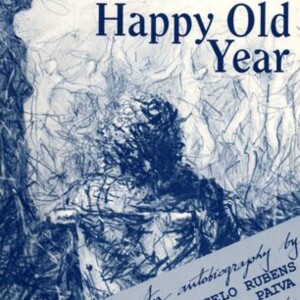
Friday Jul 04, 2025
Friday Jul 04, 2025
1 What's Happy Old Year
"Happy Old Year" by Marcelo Rubens Paiva explores themes of nostalgia, the passage of time, and the complexities of memory. The narrative follows a protagonist reflecting on past relationships and experiences while organizing the remnants of a significant year in their life. As they confront the emotional weight of memories tied to personal growth and loss, the story delves into the interplay between the joy of cherished moments and the sorrow of what has been left behind. Ultimately, it highlights the importance of reconciling with the past to embrace the future.
2 Key Concepts of Happy Old Year
In "Happy Old Year," the theme introduced in Chapter 1 revolves around the concept of letting go of the past to embrace new beginnings. This theme resonates throughout various chapters, particularly in Chapter 4, where the protagonist confronts her memories and past relationships while cleaning out her childhood home. Additionally, Chapter 7 reinforces this idea as she navigates her emotional ties to objects and learns to differentiate between what to keep and what to release, ultimately highlighting the transformative power of decluttering one's life both physically and emotionally.
3 In-Depth Chapter Analysis of Happy Old Year by Marcelo Rubens Paiva
"Happy Old Year" by Marcelo Rubens Paiva intricately weaves together themes of nostalgia, memory, and the passage of time through its chapters. One notable chapter reflects on the protagonist's struggle with letting go of emotional baggage tied to personal relationships and past experiences. For instance, there are poignant moments where he revisits old letters, photographs, and mementos, each serving as a tangible connection to a bygone era. This connection underscores the conflict between cherishing memories and the necessity of moving forward, highlighting the bittersweet nature of reminiscence.
Another chapter delves into the protagonist's attempts to redefine his identity as the new year approaches. He grapples with the weight of expectations and the pressure to create resolutions that resonate with his deeper desires for personal growth. Throughout this chapter, the symbolism of the new year serves as a catalyst for self-reflection and transformation. The protagonist's interactions with friends and family illuminate his internal struggle, as they symbolize both support and the stark reminders of unresolved past issues. These relationships are emblematic of the broader theme of how our past continues to shape our present, emphasizing that moving forward often requires confronting and reconciling with the memories that make us who we are.
Book Summary Audio Bookey https://www.bookey.app/audiobook/happy-old-year
Youtube https://www.youtube.com/watch?v=N4bEQHtNanM
Amazon https://www.amazon.com/Happy-Old-Year-Autobiography-Discoveries/dp/0935480536
Goodreads https://www.goodreads.com/book/show/716391
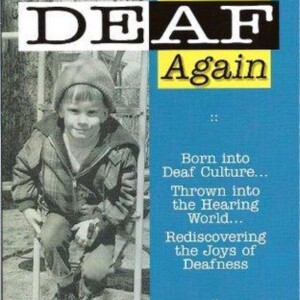
Thursday Jul 03, 2025
Thursday Jul 03, 2025
1 What's Deaf Again
"Deaf Again" by Mark Drolsbaugh explores the experiences of being deaf in a hearing world, emphasizing the challenges and triumphs of living with a hearing impairment. The memoir recounts Drolsbaugh's journey from being a hearing child to losing his hearing and navigating various societal perceptions and communication barriers. Through personal anecdotes, he highlights the significance of identity, the importance of the Deaf community, and the struggles for acceptance and understanding in a predominantly hearing society. Ultimately, the book serves as a poignant reflection on resilience, belonging, and the broader implications of deafness on one's life.
2 Key Concepts of Deaf Again
In "Deaf Again," chapters that resonate with the theme introduced in Chapter 1—identity and the struggle for acceptance—include Chapter 3, where the author explores moments of isolation and alienation due to deafness, emphasizing the need for self-acceptance. Additionally, Chapter 5 delves into the journey of finding community and belonging within the deaf world, reinforcing the idea that identity is shaped by both personal experiences and social interactions. These chapters illustrate the complex interplay between deafness and identity, highlighting the author’s path toward embracing his uniqueness.
3 In-Depth Chapter Analysis of Deaf Again by Mark Drolsbaugh
In "Deaf Again," Mark Drolsbaugh explores the journey of self-discovery and identity within the Deaf community. One of the pivotal chapters focuses on Drolsbaugh's experiences in mainstream education, where he grapples with his deafness in a hearing world. This chapter vividly illustrates the theme of belonging and isolation, as he navigates the challenges of communication and social interactions. For instance, his feelings of frustration during a classroom lesson where he is unable to follow along highlight the barriers faced by individuals who are deaf or hard of hearing, showcasing a broader struggle for acceptance and connection in an unaccommodating environment.
Another significant chapter delves into Drolsbaugh's immersion in the Deaf community, marking a transformative shift in his understanding of identity and pride. In this chapter, he recounts his experiences at Deaf clubs and events, where he finds a sense of camaraderie and affirmation among fellow Deaf individuals. This sense of belonging empowers him to embrace his identity fully, contrasting sharply with his earlier feelings of alienation. His vivid descriptions of shared laughter, stories, and sign language highlight the warmth and richness of Deaf culture, reinforcing the theme of community as a source of strength and resilience. Together, these chapters encapsulate Drolsbaugh's journey from isolation to connection, emphasizing the importance of community in shaping one's identity.
Book Summary Audio Bookey https://www.bookey.app/audiobook/deaf-again
Youtube https://www.youtube.com/watch?v=goobsGthzRk
Amazon https://www.amazon.com/Deaf-Again-Mark-Drolsbaugh/dp/0965746062
Goodreads https://www.goodreads.com/book/show/427645
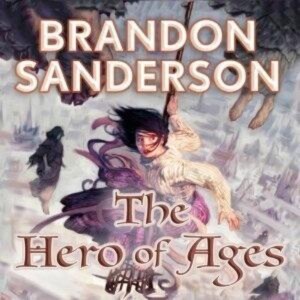
Wednesday Jul 02, 2025
Wednesday Jul 02, 2025
1 What's The Hero of Ages
"The Hero of Ages" is the concluding novel in Brandon Sanderson's Mistborn series, where themes of sacrifice, legacy, and the struggle between good and evil culminate in a gripping narrative. The story revolves around Vin and her companions as they seek to uncover the truth behind their world’s history, the nature of the power they wield, and the role of the Hero of Ages. As the Last Empire faces impending doom from Ruin, they navigate betrayal, moral dilemmas, and the weight of their destinies. The novel explores the complexities of heroism and the intricate balance between creation and destruction, culminating in an unexpected resolution that redefines what it means to be a hero.
2 Key Concepts of The Hero of Ages
In "The Hero of Ages" by Brandon Sanderson, the theme of sacrifice and its profound impact on destiny is woven throughout the narrative, beginning in Chapter 1 and resonating in various chapters thereafter. Notably, Chapter 12 delves deep into the sacrifices made by the characters in their quest to confront a seemingly insurmountable evil, highlighting the personal costs of their decisions. Additionally, Chapter 20 echoes this theme through the transformative choices of key characters, who grapple with the necessity of sacrifice for the greater good. Ultimately, these chapters, among others, reinforce the central concept that true heroism often demands the ultimate price.
3 In-Depth Chapter Analysis of The Hero of Ages by Brandon Sanderson
In "The Hero of Ages," the final volume of Brandon Sanderson's Mistborn trilogy, several chapters interweave to explore themes of sacrifice, power, and the complexity of heroism. For instance, the early chapters emphasize Vin's internal struggles with her identity and purpose, particularly in Chapter 5, where she grapples with the weight of her role as a chosen hero. This reflects the overarching theme that heroism is not merely a title but a burden that requires personal sacrifice and moral courage. Vin’s interactions with characters like Elend and Sazed further highlight the theme; these relationships show the human cost of leadership and the necessity of trust in overcoming monumental challenges.
As the story progresses, particularly in Chapter 24, the theme of power becomes prominent through the juxtaposition of the oppressive forces of Ruin versus the fragile alliances formed by the protagonists. The characters' evolving understanding of power—both its corrupting influence and its potential for good—culminates in their strategic decisions and ultimate sacrifices, reinforcing the idea that true heroism involves difficult choices and the willingness to face the consequences of one's actions. The climax in Chapter 31 epitomizes this as Vin confronts her destiny, ultimately embodying the complexity of a hero who must reconcile love, duty, and the necessity of destruction for creation, thus tying together the themes of the trilogy in a profound resolution.
Book Summary Audio Bookey https://www.bookey.app/audiobook/the-hero-of-ages
Quotes https://www.bookey.app/book/the-hero-of-ages/quote
Youtube https://www.youtube.com/watch?v=0ROoGNIDGQM
Amazon https://www.amazon.com/Hero-Ages-Book-Three-Mistborn/dp/0765356147
Goodreads https://www.goodreads.com/book/show/2767793-the-hero-of-ages

Tuesday Jul 01, 2025
Tuesday Jul 01, 2025
1 What's The Namesake
"The Namesake" by Jhumpa Lahiri explores themes of identity, belonging, and cultural dislocation through the life of Gogol Ganguli, the son of Bengali immigrants in America. The novel delves into Gogol's struggle with his name, which symbolizes his conflicted heritage and the pressure of cultural expectations. As he navigates the challenges of growing up in a foreign environment, the narrative highlights the generational divide between him and his traditional parents, Ashoke and Ashima, as well as the broader immigrant experience. Ultimately, Gogol's journey reflects the complexities of identity formation and the search for self-acceptance amid cultural differences.
2 Key Concepts of The Namesake
In Chapter 1 of "The Namesake," the theme of identity and cultural dislocation is introduced through Gogol Ganguli's parents, Ashoke and Ashima, as they navigate life in America while holding onto their Bengali roots. This theme recurs throughout the novel, particularly in Chapters 3, 5, and 7. In Chapter 3, Gogol’s struggles with his name and its significance reflect his internal conflict regarding his identity. In Chapter 5, his experiences at college further accentuate his sense of alienation and the complexities of cultural assimilation. By Chapter 7, Gogol’s relationship choices illustrate his ongoing challenges in reconciling his heritage with his personal desires, highlighting the theme's persistence throughout the narrative.
3 In-Depth Chapter Analysis of The Namesake by Jhumpa Lahiri
In "The Namesake" by Jhumpa Lahiri, the narrative is structured around the distinct phases of Gogol Ganguli's life, each chapter revealing the complexities of identity and belonging. In the early chapters, such as Chapter 1 and Chapter 3, the theme of cultural dislocation is pronounced through Gogol's experiences as a first-generation American child grappling with his Bengali heritage. For instance, in Chapter 1, Gogol’s struggle with his unusual name, a source of embarrassment and confusion in school, highlights his alienation and desire to assimilate into American culture, contrasting sharply with his parents' adherence to their roots. This conflict is emblematic of the broader theme of identity, as he feels caught between two worlds.
As the story progresses into later chapters, particularly Chapter 5 and Chapter 8, the theme deepens, exploring the complexities of familial relationships and the impact of loss. In Chapter 5, Gogol’s experiences at college and his fleeting relationships underscore his ongoing quest for identity, increasingly distancing him from his family's traditions. The poignant moment of Ashoke's death in Chapter 8 serves as a pivotal point in Gogol's journey, compelling him to confront his heritage. This act of mourning brings a newfound appreciation for his father’s legacy, as Gogol begins to embrace his name and its significance, ultimately signifying a reconciliation with his identity. Through these chapters, Lahiri powerfully illustrates the interplay between cultural heritage and personal growth, revealing how the struggles within family and self can lead to a deeper understanding of one's place in the world.
Book Summary Audio Bookey https://www.bookey.app/audiobook/the-namesake
Quotes https://www.bookey.app/book/the-namesake/quote
Youtube https://www.youtube.com/watch?v=IFIgzYVRfKk
Amazon https://www.amazon.com/Namesake-Novel-Jhumpa-Lahiri/dp/0618485228
Goodreads https://www.goodreads.com/book/show/33917.The_Namesake
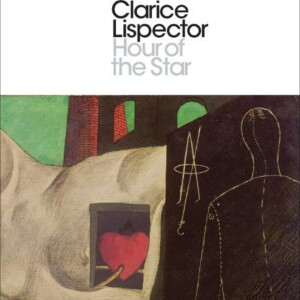
Thursday Jun 26, 2025
Thursday Jun 26, 2025
1 What's Hour Of The Star
"Hour of the Star" by Clarice Lispector explores themes of identity, alienation, and the search for meaning through the life of Macabéa, a poor young woman living in Rio de Janeiro. The narrative, told from the perspective of a self-reflective author, delves into Macabéa's mundane existence and her struggles as an outsider, highlighting her innocence and the despair she faces in a harsh society that largely ignores her. The story poignantly examines the intersection of reality and fiction, examining the value of a person's life and the profound impact of societal indifference. Ultimately, it invites readers to reflect on the complexities of existence and the significance of individual stories within a broader context.
2 Key Concepts of Hour Of The Star
In "Hour of the Star" by Clarice Lispector, the theme of existential absurdity and the struggle for identity is established in Chapter 1, where the narrator reflects on the life of the protagonist, Macabéa. This theme resonates throughout the novel, particularly in Chapters 2 and 3, where Macabéa's mundane existence and her disconnection from society are further explored. These chapters illustrate her passive acceptance of her fate and highlight the absurdity of her struggles in a world that is indifferent to her existence. The theme of alienation and the search for meaning in an often cruel and indifferent universe persistently echoes throughout the narrative, providing a commentary on the human condition.
3 In-Depth Chapter Analysis of Hour Of The Star by Clarice Lispector
"Hour of the Star" by Clarice Lispector is a poignant exploration of identity, existence, and the socio-economic struggles faced by marginalized individuals. The novel is divided into chapters, each intricately tied to the central theme of alienation and the quest for self-understanding. For instance, in the opening chapters, we are introduced to Macabéa, a poor young woman living in Rio de Janeiro. Her mundane life—characterized by her meager job as a typist and lack of personal connections—serves to highlight the stark reality of social invisibility. Lispector employs a stream-of-consciousness narrative to delve into Macabéa's thoughts, illustrating her naive optimism yet profound sense of alienation. The interaction with her co-workers and her passive acceptance of her life encapsulate the theme of existential despair amid an indifferent society.
As the story progresses, particularly in the latter chapters, the theme of suffering and aspiration becomes more pronounced. The dramatic climax occurs when Macabéa faces a stark turning point, culminating in tragic circumstances that epitomize her struggles against the oppressive forces of her surroundings. The author juxtaposes Macabéa's yearning for love and recognition with her harsh reality, illustrating the futility of her dreams. The moments of reflection, particularly through the narrator's commentary, further deepen the exploration of existence as a fundamental question—highlighting how societal neglect can shape the psyche of individuals. Lispector's use of language and philosophical musings throughout the chapters serves to reinforce the interconnectedness of Macabéa's life experiences with broader themes of identity, existentialism, and the human condition.
Book Summary Audio Bookey https://www.bookey.app/audiobook/hour-of-the-star
Youtube https://www.youtube.com/watch?v=-EC-qLLPYcE
Amazon https://www.amazon.com/Hour-Star-Second-Clarice-Lispector/dp/0811219496
Goodreads https://www.goodreads.com/book/show/762390.The_Hour_of_the_Star
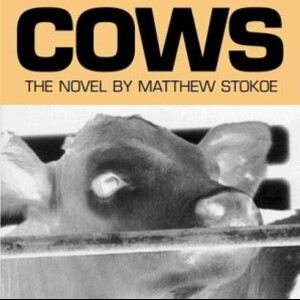
Tuesday Jun 24, 2025
Tuesday Jun 24, 2025
1 What's Cows
"Cows" by Matthew Stokoe explores themes of alienation, body horror, and the darker aspects of human nature through a surreal and unsettling narrative. The story revolves around a deeply troubled protagonist who delves into the grotesque and disturbing world of cattle farming, confronting the brutal realities of life and death. As the boundaries between humanity and the animal kingdom blur, Stokoe examines the instinctual drives that govern existence, all while creating a visceral atmosphere that challenges societal norms and provokes introspection about the nature of life, suffering, and the human condition.
2 Key Concepts of Cows
In "Cows" by Matthew St. James, Chapters 2, 4, and 6 notably relate to the theme introduced in Chapter 1, which explores the complexities of rural life and the interdependence between humans and animals. Chapter 2 delves into the daily routines of farm life, highlighting the sacrifices and rewards that come with agricultural work. Chapter 4 examines the relationships between farmers and their livestock, emphasizing the emotional bonds that develop over time. Finally, Chapter 6 reflects on the impact of modernity and technology on traditional farming practices, illustrating the ongoing struggle to maintain a connection with the land and the animals that inhabit it. Together, these chapters underscore the intricate balance of life on the farm, as introduced in the opening chapter.
3 In-Depth Chapter Analysis of Cows by Matthew Stokoe
In "Cows" by Matthew Stokoe, the chapters intricately weave together themes of isolation, survival, and the human condition through visceral imagery and stark narratives. In the early chapters, the protagonist grapples with his detachment from society, depicted through his interactions with the environment and the cows he tends. The stark reality of farm life is highlighted in Chapter 3, where the physical labor mirrors the emotional burden he carries, signifying a struggle for connection in a seemingly indifferent world. The repeated imagery of the cows, embodying both vulnerability and a primal instinct for survival, serves to parallel the protagonist’s own internal battles, illustrating a profound commentary on existence.
As the narrative progresses, particularly in Chapter 6, the theme of survival intensifies, exploring not just physical endurance but also psychological survival amid grotesque circumstances. The stark and often brutal depiction of life and death on the farm illustrates a cycle of violence and sustenance, forcing the protagonist to confront the moral implications of his actions. This chapter serves as a pivotal moment, connecting to the broader theme of the human struggle for meaning within a harsh reality. The visceral experiences—a foreshadowing of impending loss and transformation—culminate in a reflection on the fragility of existence, blending the grotesque and the mundane in a haunting meditation on life’s cyclical nature. Thus, each chapter meticulously builds upon the central themes, creating a compelling exploration of humanity through the lens of rural life.
Book Summary Audio Bookey https://www.bookey.app/audiobook/cows
Youtube https://www.youtube.com/watch?v=ug8UNnbGQ28
Amazon https://www.amazon.com/Cows-Mr-Matthew-Stokoe/dp/0987453661
Goodreads https://www.goodreads.com/book/show/815760.Cows
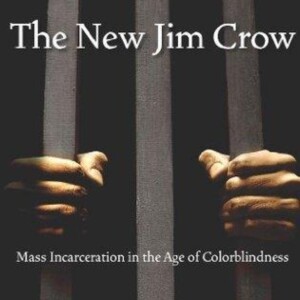
Monday Jun 23, 2025
Monday Jun 23, 2025
1 What's The New Jim Crow
"The New Jim Crow: Mass Incarceration in the Age of Colorblindness" by Michelle Alexander argues that the U.S. criminal justice system functions as a contemporary system of racial control, akin to the Jim Crow laws of the past. Alexander contends that mass incarceration disproportionately affects African American communities and perpetuates systemic racism through policies that criminalize poverty and enforce social stigmas. The book highlights how discriminatory practices in policing, sentencing, and parole maintain a racial caste system, ultimately limiting opportunities for millions of individuals while fostering a social narrative that dismisses the realities of systemic inequality.
2 Key Concepts of The New Jim Crow
In "The New Jim Crow," Chapter 1 introduces the theme of mass incarceration as a contemporary system of racial control that perpetuates racial and social hierarchies. Subsequent chapters, particularly Chapter 2 ("The Lockdown") and Chapter 3 ("The Color of Justice"), further develop this theme by examining the systemic injustices within the criminal justice system, such as discriminatory policing practices and biased legal proceedings that disproportionately target African Americans. Chapter 4 ("The Cruel Hand") highlights the consequences of a felony record, which effectively disenfranchises and marginalizes individuals, creating barriers to employment, housing, and voting. Together, these chapters illustrate how mass incarceration functions similarly to the old Jim Crow laws, sustaining racial inequality and oppression in society.
3 In-Depth Chapter Analysis of The New Jim Crow by Michelle Alexander
In "The New Jim Crow," Michelle Alexander meticulously explores the intersection of race and the criminal justice system across several compelling chapters, each underscoring the systematic racial discrimination that persists in contemporary America. Chapter 1 introduces the notion of mass incarceration as a pivotal mechanism of social control, drawing parallels to the historical Jim Crow laws. Alexander highlights how the war on drugs disproportionately targets Black communities, using statistics to illustrate that, despite similar rates of drug use, African Americans are far more likely to be arrested and imprisoned. This lays the foundation for the book's central argument that racism has evolved into a new form, manifesting through legal structures rather than overtly discriminatory laws.
In subsequent chapters, Alexander delves deeper into the implications of a racially biased criminal justice system. Chapter 2 focuses on the processes that lead to such disparities, including police practices and sentencing policies that are often racially motivated. The author recounts personal narratives and case studies that reveal how individuals, once labeled felons, face disenfranchisement and social stigma, resulting in a cycle of poverty and marginalization. This chapter emphasizes the theme of systemic oppression, illustrating how the criminal justice system perpetuates inequality, mirroring the effects of Jim Crow laws by stripping individuals of their rights and relegating them to a second-class status. Together, these chapters illuminate how mass incarceration serves as a contemporary racial caste system, inflicted upon those most vulnerable in society.
Book Summary Audio Bookey https://www.bookey.app/audiobook/the-new-jim-crow
Quotes https://www.bookey.app/book/the-new-jim-crow/quote
Youtube https://www.youtube.com/watch?v=Gln1JwDUI64
Amazon https://www.amazon.com/New-Jim-Crow-Incarceration-Colorblindness/dp/1595586431
Goodreads https://www.goodreads.com/book/show/6792458-the-new-jim-crow

Friday Jun 20, 2025
Friday Jun 20, 2025
1 What's The Only Good Indians
"The Only Good Indians" by Stephen Graham Jones explores themes of identity, cultural trauma, and the haunting impact of past choices within the Native American experience. The story follows four Blackfeet men who, years after a fateful hunting trip, find themselves stalked by a supernatural force seeking vengeance for their actions, which violate the sacred traditions of their community. As the narrative unfolds, it delves into the complexities of living between worlds—the struggles of maintaining cultural identity in a modern society, the consequences of their decisions, and the ways in which their past continues to shape their present. The blend of horror and social commentary highlights the enduring scars of colonialism and the need for reconciliation with one’s heritage.
2 Key Concepts of The Only Good Indians
In "The Only Good Indians" by Stephen Graham Jones, Chapter 1 introduces the theme of cultural identity and the haunting impact of past choices. This theme is intricately woven throughout the novel, particularly in Chapters 2, 5, and 11, where the characters grapple with the consequences of their actions and the deep-seated connections to their Native American heritage. These chapters explore how the characters' experiences reflect their struggles with identity, memory, and the persistent influence of their environment, showcasing the complexities of navigating modern existence while confronting ancestral legacies.
3 In-Depth Chapter Analysis of The Only Good Indians by Stephen Graham Jones
In "The Only Good Indians," Stephen Graham Jones skillfully weaves a narrative that examines themes of identity, cultural legacy, and the trauma of the past through its distinct chapters, each focusing on different characters and moments that reveal how these themes resonate within Native American life. For instance, in the first chapter, we meet Louis, whose life is marked by a hunting incident from a decade prior that haunts him in the present. This chapter illustrates the struggle against the ghosts of one's choices, emphasizing the weight of cultural responsibilities and how the past can invade the present, leading to a profound sense of guilt and fear. Louis's internal conflict is emblematic of the broader theme of how historical traumas impact contemporary Native identities.
As the narrative progresses into subsequent chapters, such as the pivotal chapter focused on Gabe and the deer, the theme of survival and the complexities of modern Native identity become even more pronounced. Gabe's experience with the deer he encounters conjures deep connections to ancestral ties and the nature of spirituality. Here, the cyclical nature of life and death plays a crucial role, suggesting that the struggle between traditional values and modern existence is a central conflict for Native individuals. Jones's multifaceted storytelling reveals how each character grapples with their past and cultural heritage, ultimately culminating in a broader commentary on the Indigenous experience in contemporary society. This intertwining of personal struggle with collective history solidifies the thematic foundation of "The Only Good Indians."
Book Summary Audio Bookey https://www.bookey.app/audiobook/the-only-good-indians
Quotes https://www.bookey.app/book/the-only-good-indians/quote
Youtube https://www.youtube.com/watch?v=ufXtGkPQEDA
Amazon https://www.amazon.com/Only-Indians-Stephen-Graham-Jones/dp/1982136456
Goodreads https://www.goodreads.com/book/show/52180399-the-only-good-indians

Friday Jun 13, 2025
Friday Jun 13, 2025
1 What's Crier's War
"Crier's War" by Nina Varela is a fantasy novel set in a world where humans and automae, sentient beings created to serve them, grapple with issues of power, identity, and love. The story primarily follows two protagonists: Crier, an heiress automa who struggles with her programmed loyalties and the expectations of her society, and Ayla, a human girl driven by a desire for revenge against the automae for past injustices. As their paths intertwine, the novel explores themes of rebellion, the complexity of human emotions versus artificial constructs, and the fight for autonomy and acceptance in a world marked by prejudice and inequality, ultimately culminating in a poignant examination of love that challenges societal boundaries.
2 Key Concepts of Crier's War
In "Crier's War" by Nina Varela, the theme of power dynamics and the struggle for agency is prevalent throughout the novel. In addition to Chapter 1, this theme is particularly evident in Chapter 2, where the inequities between humans and the Automae are starkly illustrated, highlighting how societal structures dictate the characters' lives. Chapter 4 further explores the internal conflicts of the protagonists as they navigate their desires for autonomy amid oppressive systems. Chapter 7 deepens this theme by showcasing pivotal moments that challenge traditional roles and provoke questions about identity and rebellion, ultimately underscoring the characters' quest for power and self-determination.
3 In-Depth Chapter Analysis of Crier's War by Nina Varela
In "Crier's War" by Nina Varela, the early chapters lay the groundwork for the intricate relationship between the themes of power, identity, and forbidden love. In Chapter 1, we are introduced to Aylen, a human who lives under the oppressive rule of the Automa, a race of robotic beings. This chapter illustrates the power dynamics at play, showcasing the animosity and resentment held by humans towards their Automa rulers. For instance, Aylen’s disdain for the Automa is palpable, emphasizing the theme of oppression and the struggle for freedom. This contrasts sharply with Crier, the Automa princess, who grapples with her own identity and emotions, particularly in Chapter 5, where her curiosity about humans and her emerging feelings for Aylen signify a burgeoning awareness that challenges her programmed beliefs.
As the story unfolds, the connection between Aylen and Crier deepens, particularly in Chapter 7, where they share a pivotal moment that explores both vulnerability and desire. Here, the author brilliantly weaves themes of love and rebellion as they confront societal expectations and their own identities. Their interactions highlight the tension between duty and desire, showcasing the lengths to which they are willing to go to defy their worlds. This intertwining of personal and political struggles illustrates a profound commentary on the nature of power and love, ultimately driving home the message that the fight for agency often transcends the boundaries set by oppressive regimes.
Book Summary Audio Bookey https://www.bookey.app/audiobook/crier's-war
Quotes https://www.bookey.app/book/crier%27s-war/quote
Youtube https://www.youtube.com/watch?v=EyIMwb90lBU
Amazon https://www.amazon.com/Criers-War-Nina-Varela/dp/0062823949
Goodreads https://www.goodreads.com/book/show/41951626-crier-s-war








